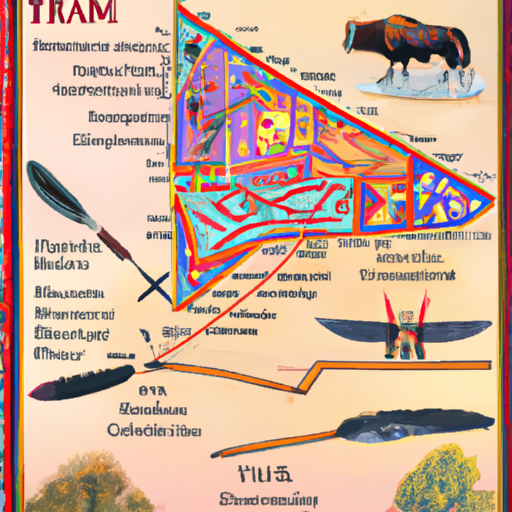– **Teaching Stalking Skills: Passing Down Knowledge in Apache Communities**
Introduction
In the heart of Apache communities, the tradition of teaching stalking skills has been passed down through generations. Rooted in ancient wisdom, these practices are not only vital for survival but also for maintaining a deep connection with nature. The art of stalking, which involves moving silently and observing the environment keenly, is a testament to the Apache’s profound understanding of the wilderness.
Stalking skills are taught with an emphasis on patience, discipline, and respect for the land. Elders play a crucial role in this educational journey, imparting techniques and stories that underscore the importance of these skills. This knowledge transfer ensures that younger generations appreciate their heritage and learn to navigate their natural surroundings efficiently.
The lessons often begin with simple tasks, gradually increasing in complexity as the learner progresses. Techniques such as reading animal tracks, understanding wind patterns, and moving without disturbing the environment are crucial components of the training. Through this methodical approach, novices grow into adept trackers, capable of thriving in diverse terrains.
For the Apache, teaching and learning stalking skills are more than mere practices; they are a rite of passage and a way to honor their ancestors. This tradition fosters a sense of community and continuity, preserving the essence of Apache identity. Such skills, taught with reverence and dedication, reveal the intricate and harmonious relationship the Apache have with nature.
History
In Apache communities, the tradition of teaching stalking skills dates back centuries, rooted in their deep connection to the land and survival instincts. These skills were often passed down through generations, ensuring that each member of the tribe could contribute to the community’s well-being. Elders played a crucial role in this process, sharing their expertise and experiences with the younger members.
Learning to stalk effectively was not just about hunting, but also about understanding the environment and moving through it with respect and awareness. Lessons often began at a young age, incorporating games and stories to instill the foundational principles. Over time, as young apprentices honed their skills, they would accompany the seasoned hunters, observing and practicing under guided supervision.
“To move like a shadow, to listen to the whispers of the wind, and to see without being seen—these are the teachings that sculpt an Apache stalker.”
The emphasis on observational skills helped the Apache become one of the most proficient and respected trackers in North America. Through ceremonies, rituals, and daily practices, the art of stalking was ingrained in the community’s way of life. This rich heritage continues to be honored and preserved, adapting to modern contexts while maintaining its core values.
An Apache story
In the heart of the Apache communities, the knowledge of stalking skills has always been revered as more than a survival technique. Elders often recount stories by the fire, detailing the noble acts of their ancestors who moved with the grace of the wind and the silence of shadows. These narratives serve not only to entertain but to instill a deep understanding of the land and respect for nature.
One such story tells of a young Apache warrior named Taza, whose ability to move unseen was unmatched. According to the tale, Taza honed his skills under the tutelage of his grandfather, an esteemed tracker. His grandfather taught him the importance of patience, observation, and respect for every step taken on the earth, lessons that Taza passed down to the younger generations.
The lessons were never direct commands but woven into stories and daily experiences. For instance, Taza’s grandfather would take him into the forest and ask him to find a deer without disturbing any other creatures. These exercises helped Taza develop an acute awareness of his surroundings, which later became invaluable for hunting and warfare.
“The land speaks to those who listen,” Taza’s grandfather often said. “Every leaf, every twig has a story, and it’s our duty to hear it.”
Through such teachings, Apache children learn to blend seamlessly with their environment, becoming one with the forest. The wisdom shared through these stories creates a lineage of skilled stalkers, ensuring that the knowledge of their ancestors remains alive. This blend of practical skill and spiritual connection to the land is a vital aspect of Apache life, passed down through generations.
He began, “In the days of our grandfathers, the skill of stalking was a rite of passage. One young warrior, Chayton, was eager to earn his place among the hunters. He woke before dawn, the moon still hanging low, and met Elder Taza at the edge of the forest.”
“Chayton,” Elder Taza’s voice was soft yet firm, “to be invisible to your prey, you must move like the wind, unseen and unheard.” Taza demonstrated, stepping so gently on the earth that not a leaf rustled. “Feel the rhythm of the land, and become a part of it.”
Chayton imitated Taza, his steps careful, his breath steady. They moved through the forest, silent as the owl gliding in the night. The scent of pine and cedar filled their senses, grounding them in the ancient dance between hunter and hunted.
“Remember,” Taza whispered, “the spirit of the deer is wise. You must respect it and become as one with the forest.”
As days turned into weeks, Chayton’s movements grew fluid, his patience unwavering. He learned to read the signs left by animals, the broken twigs, the slight depressions in the soil. His connection with the earth deepened, and he walked in harmony with the natural world.
One morning, Chayton spotted a majestic buck grazing in a meadow. He moved with the precision Taza had taught him, every muscle poised, every heartbeat calm. As he nocked his arrow, the buck raised its head, meeting his gaze. There was a moment of understanding, a silent acknowledgement of the balance between life and survival. Chayton released the arrow with a prayer of gratitude.
Elder Naiche paused, eyes gleaming as he looked at the faces around the fire. “Chayton did not just become a great hunter that day. He learned the deeper truth of our ways. To stalk is not only to hunt, but to honor the life we take and to live in harmony with the
Implementing it in your life
Adopting the Apache approach to teaching stalking skills involves immersing yourself in nature and observing the environment. Spend time outdoors, becoming attuned to the sounds, sights, and signs of animal activity. This mindfulness fosters a deeper connection to the land and an intuitive understanding of animal behavior.
Engaging with knowledgeable elders or experts who can impart traditional techniques is crucial. These mentors provide insights that books and online resources cannot, offering hands-on experiences that enrich learning. Emulating their methods and philosophies ensures that the wisdom is preserved and passed down authentically.
- Spend time in natural settings daily to practice observation skills.
- Seek out community members or experts who can share traditional knowledge.
- Join local wildlife tracking groups to learn from peers and enhance your skills.
- Document your discoveries in a journal to track your progress and insights.
- Organize or join workshops and events focused on tracking and stalking skills.
- Teach these skills to family members and younger community members.
- Practice patience and mindfulness to become more attuned to your surroundings.
Implementing these steps fosters personal growth by honing your observational skills and deepening your connection to the natural world. As you learn and teach these skills, you develop a sense of responsibility and stewardship for the environment.
Moreover, passing down this knowledge reinforces community bonds and ensures the preservation of valuable cultural practices. Embracing these teachings can lead to a more mindful and connected way of living, bringing a greater appreciation for the intricate web of life that surrounds us.
Conclusion
Teaching stalking skills within Apache communities is a profound practice rooted in tradition and survival. This knowledge, handed down through generations, is essential for maintaining the cultural and practical skills that define Apache identity. The wisdom and techniques shared by elders ensure the younger generation remains connected to their heritage, while also gaining important survival skills.
The preservation of these practices is crucial not only for cultural continuity but also for the community’s self-reliance and resilience. By learning to move silently and observe nature, younger Apaches develop a deep respect for their environment and history. This connection fosters a sense of belonging and pride that is vital for community cohesion.
“Our ancestors have always taught us to read the signs of the land. By doing so, we honor their memory and carry forward their legacy.” – Apache Elder
The wisdom encapsulated in these teachings is a treasure trove that must be preserved and cherished. It embodies a way of life that is attuned to nature and deeply spiritual.
- Encourage the youth to engage actively with elders and participate in traditional learning sessions.
- Promote awareness about the cultural significance of these skills within and outside the community.
- Support initiatives that document and celebrate traditional Apache knowledge and practices.
To keep this vital tradition alive, we must commit to preserving and passing down these essential stalking skills. By embracing and nurturing this legacy, we not only honor our ancestors but also fortify the foundation of our future generations.
The image and article have been augmented with AI.
Further Study:
- What is the significance of the bow and arrow in Apache spiritual symbolism?
- What is the importance of silence and solitude in Apache spiritual practices?
- What is the importance of the concept of harmony in Apache spirituality?
- What is the role of music and dance in Apache spiritual ceremonies?
- What is the role of elders in passing down Apache spiritual knowledge?
- How do Apache spiritual practices influence their concept of wisdom and knowledge?
- What is the significance of the warrior tradition in Apache spirituality?
Thank you for reading!







